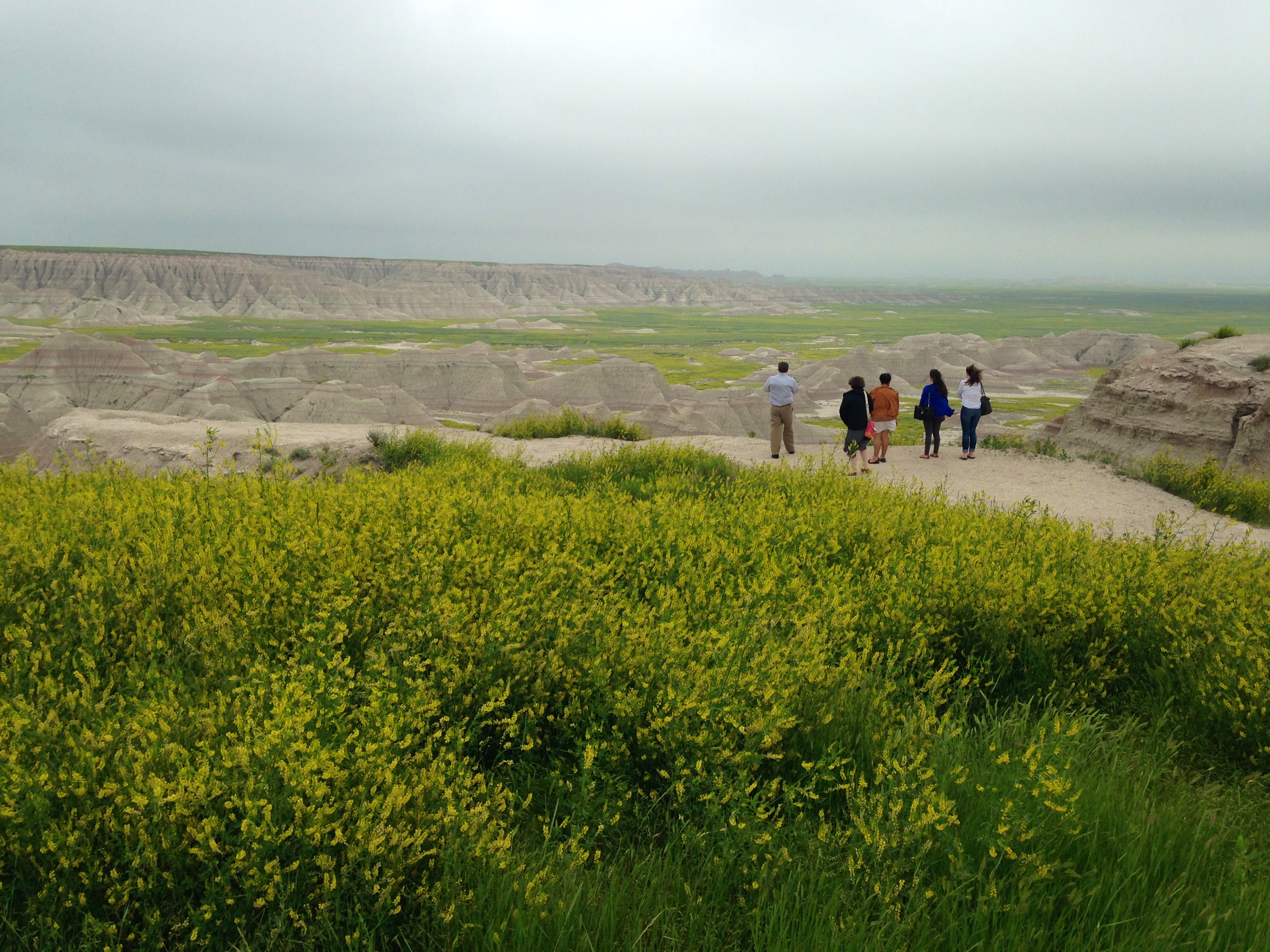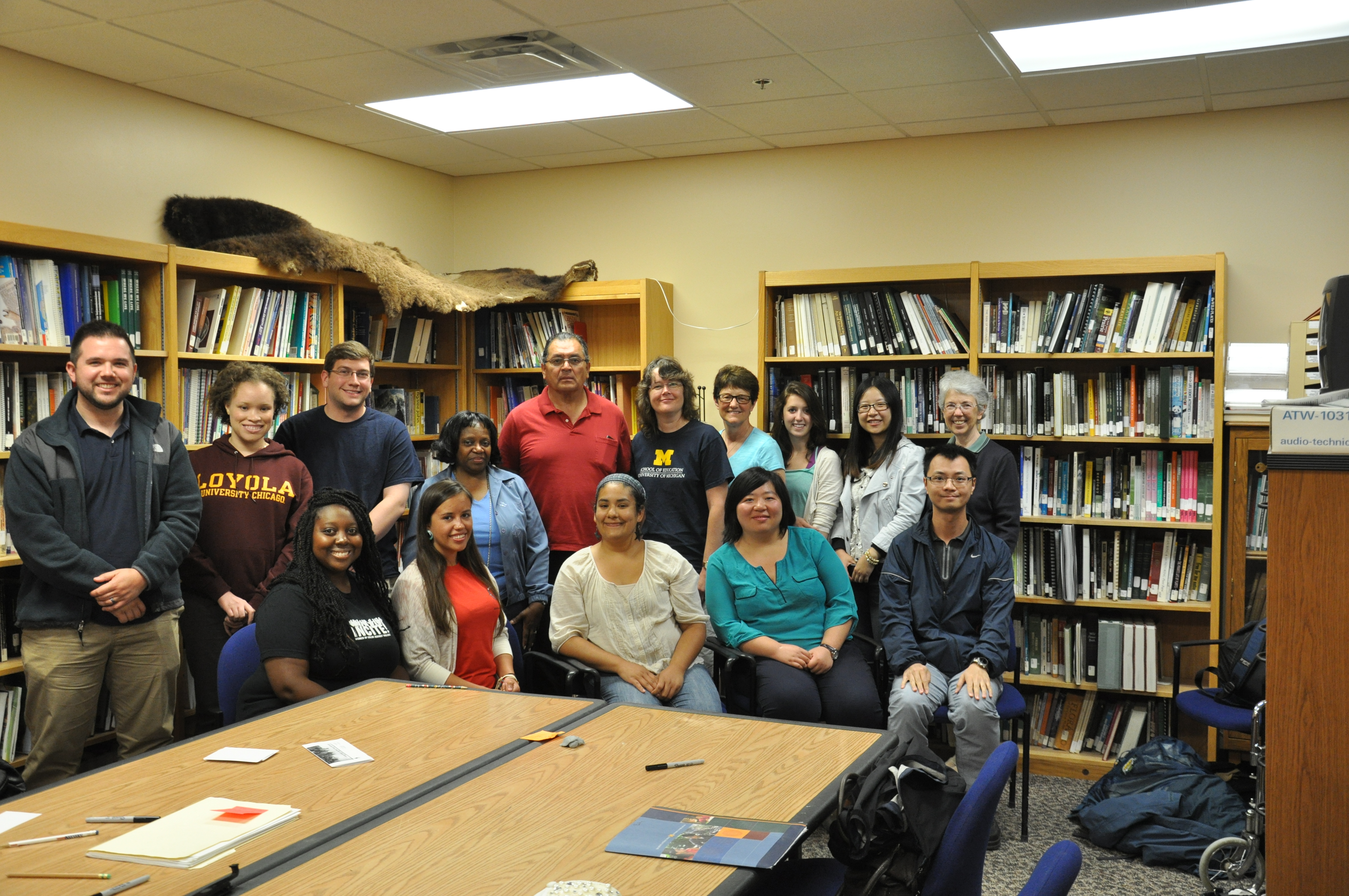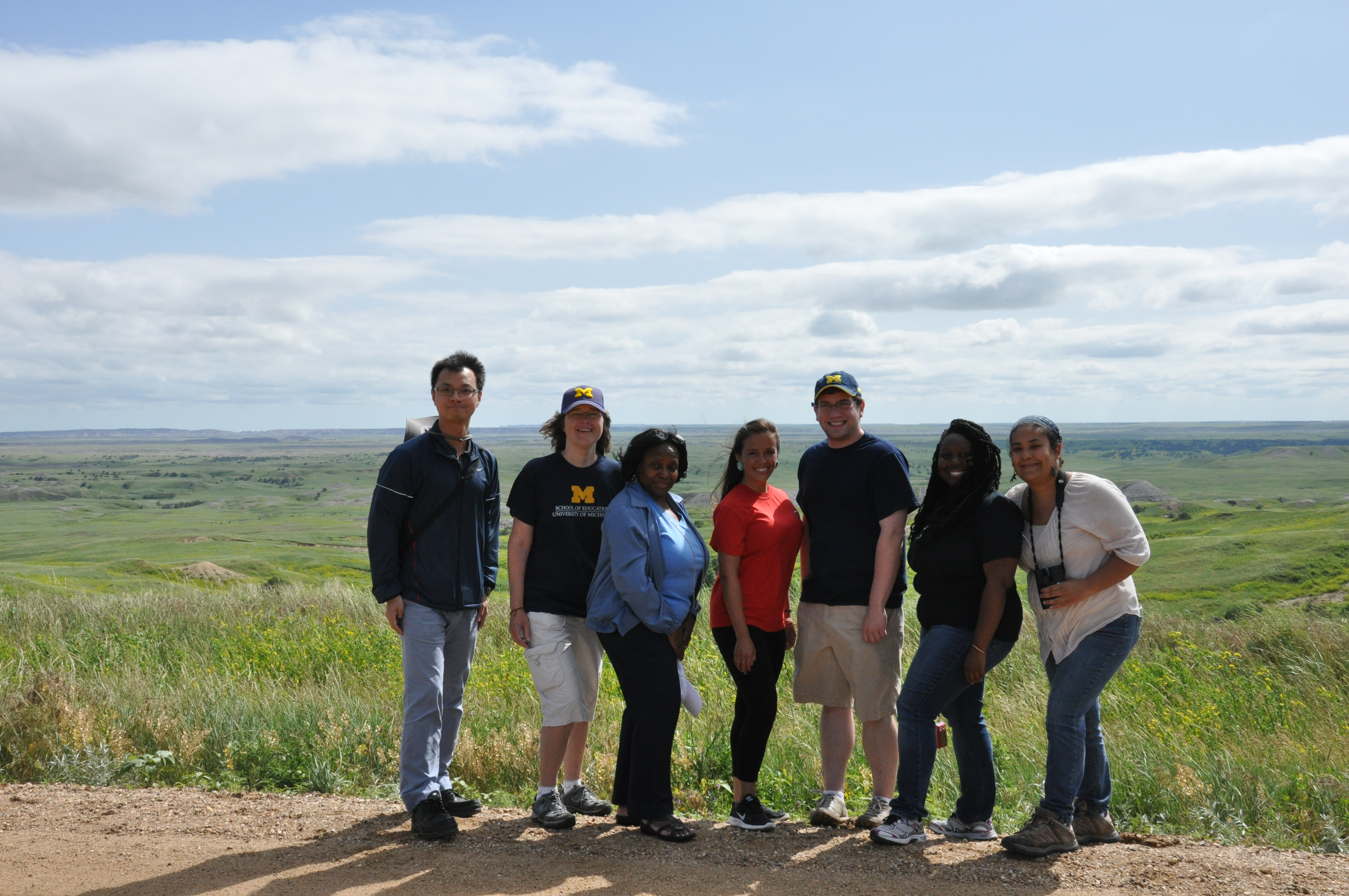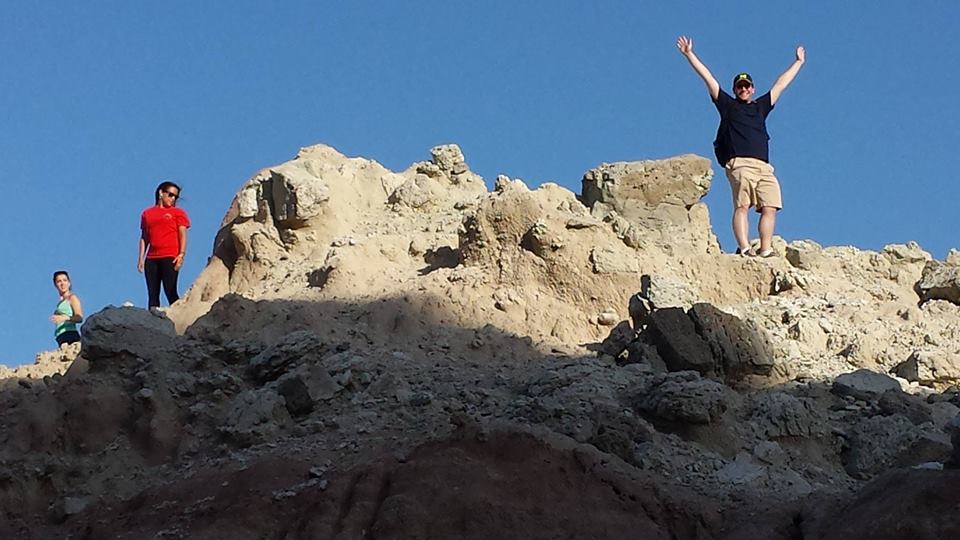Wednesday, June 18
Badlands National Park may not seem a relevant stop for a bunch of students studying higher education, but our visit has definite purpose. We meet with Harold Salway, Director of the Oglala Sioux Parks and Recreation Authority, to understand the proposal for tribal oversight of the south unit of the Badlands National Park. Harold, also a former tribal president, contextualizes the historical complexities of this movement and the impact such a decision could have on certain members of the tribe.

Here is a personal reflection from Betty Overton about our time there:
Entering Badlands National Park, I was taken back to images from many Western movies. “Badlands,” the term itself, and the challenge of these rugged natural surroundings convey the struggles of Native Americans to carve a living and a life out of their environment. The picturesque mountain-like formations stand in contrast to gentle rolling hills against an expansive sky. The combination inspires awe. The Park, part of the Sioux nation territory before the Treaty of 1868, is located in southwestern South Dakota and is managed by the National Parks Service in conjunction with the Oglala Lakota tribe we are visiting (there is a tribal advisory commission to the Park Service). The Park was officially established in 1939. The Badlands Wilderness is a designated wilderness area covering over 240,000 acres (Badlands National Park brochure). Native American people have inhabited this area for over 11,000 years, using it primarily for hunting and gathering of what was an abundant native animal life and vegetation. Around every bend in the winding roads of the Park, there was a different perspective on the land, affording many photo opportunities, from the majesty of the buffalo and thousands of Prairie Dogs who popped out of their homes to watch as we drove pass and to the amazing big horned sheep perched on thin paths on steep hill paths.
We are in Interior, SD on our way to Kyle and Oglala Lakota Tribal College, and while we acted like many tourists with our frequent photo shoots of animals and landscape, I think we understood later why this trek through Indian country was necessary. The land creates the backdrop for almost every story and conversation we had. The history, culture, and life of this people are intricately tied to this land and what has happened to it, and through it, to them.
Our conversation with Harold Salway, Director of the Oglala Sioux Parks and Recreation Authority at the Ben Reifel Visitor Center started as a conversation about the possibility of some part of the Badland National Park being turned over to the tribe to manage using traditional approaches to the land usage. This might mean reintroduction of larger buffalo herds and other grazing techniques. But in this conversation about a proposal that might be seen as a positive move, we began to hear the many obstacles and challenges to the idea as restrictions and regulations (federal and state and even some disagreements within the tribe itself), have stalled progress on its implementation. When asked about the role of higher education in preparing people for new jobs in land management, Mr. Salway praised the work that Oglala Lakota College has done, and noted there was room and need for more trained people, but emphasized the need for this education to be grounded in the old Indian ways of using the land.
I believe some of us left that conversation with a sense of the complexity of these land issues, but also with a view of the challenges to a college like Oglala Lakota to provide a contemporary education but one grounded in the culture of a people. What does that mean in the realities of providing a college education that can gain acceptance in the larger society, and how does it get played out in curriculum, in approaches to teaching, and in knowledge acquisition that makes OLC graduates employable in their community and elsewhere?
Betty Overton

During the afternoon, we explore the natural beauty of the Badlands. Several of us enjoy a hike, while others of us go in search of “critters.” Bison, big horned sheep, prairie dogs, mule deer, and a variety of birds are discovered along our tour through the park.


